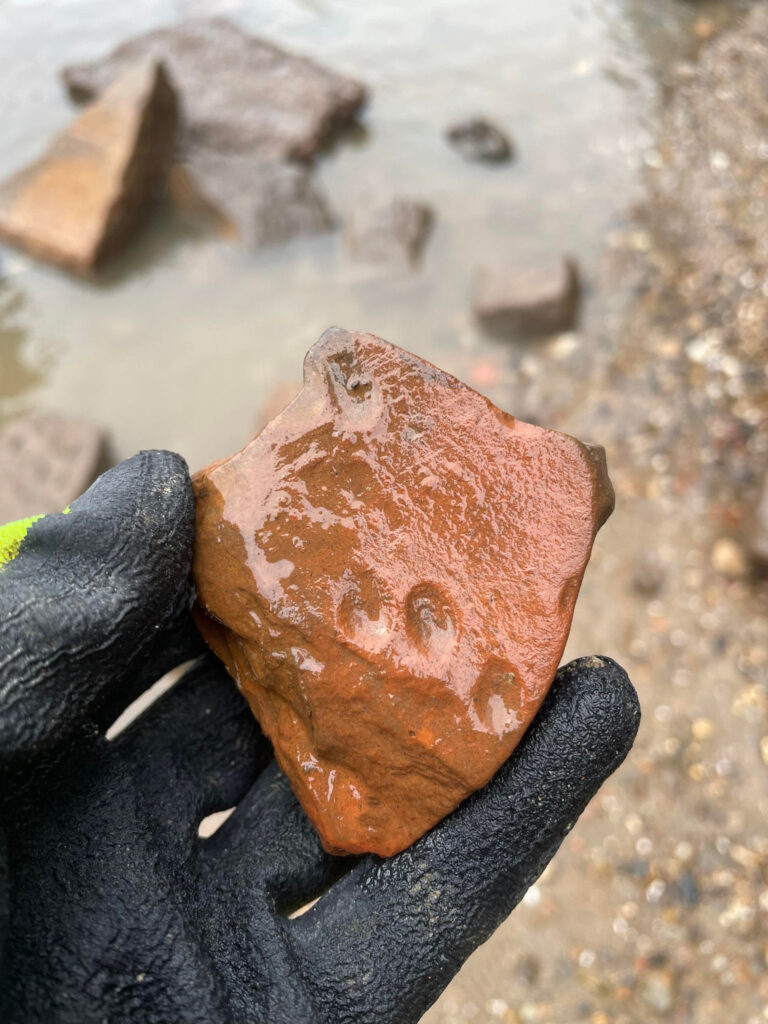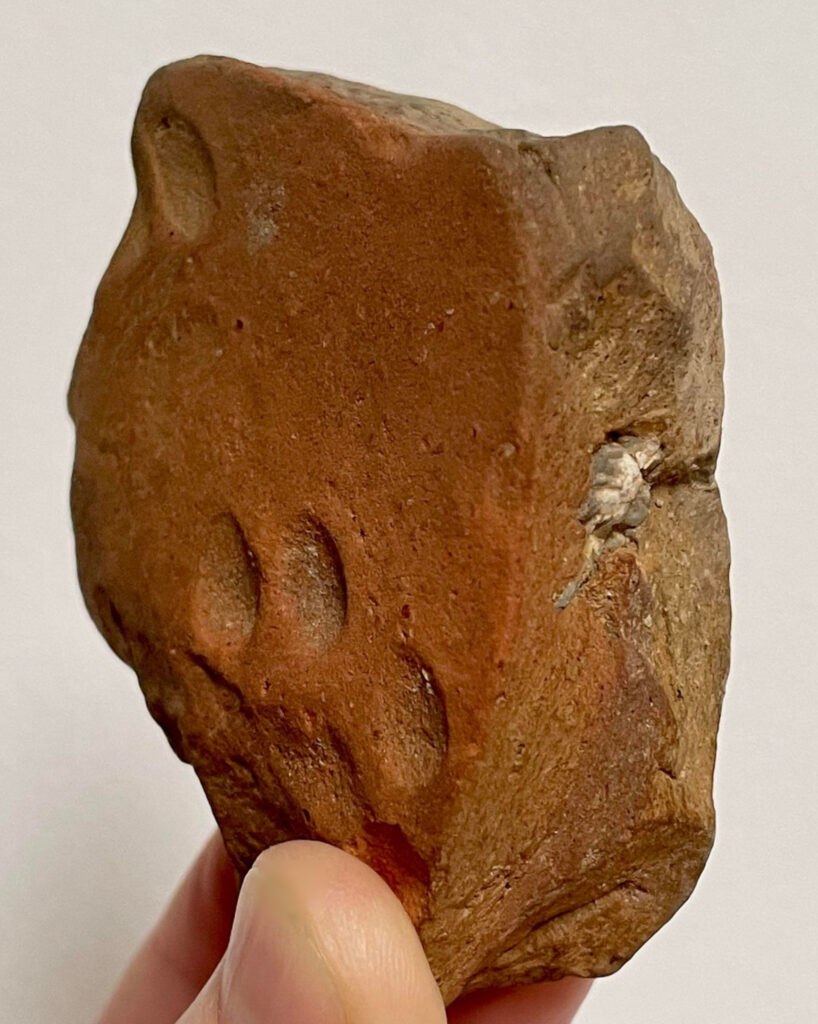A MUDLARKER was left stunned after stumbling upon a Roman-era roof tile with a near-2,000 year old cat paw print on it.
J.R. Carpenter had been sifting through the banks of the River Thames last week when she came across an orange clay roof tile.

The writer and researcher immediately knew that she had discovered a weathered Roman tile – likely to be around 1,800 years old.
The 51-year-old then noticed a deep imprint on the tile though – quickly realising it was left by a mischevious long-gone feline.
The tile itself appears to have once been part of a roof on a Roman structure which would have been unmatched in ancient civilisations.
Images show the thick palm-sized square of clay with the indented paw mark – leaving the sole reminder of a cat that lived almost two millenia ago – and a white seashell embedded within.
J.R. took to social media last night to share her amazing find writing: “An especially low tide last week revealed a cat paw print on a piece of Roman roof tile, at least 1,800 years old.”
The post has since received over 1,200 likes and dozens of comments from users cracking jokes about the seemingly unchanged attitudes of cats over the years.

One person said: “Cattitude: the same throughout the ages.”
Another wrote: “Like the old Roman would say ‘Ecce felis [behold the cat].'”
A third commented: “Better than finding gold, it’s good social history.”
Another added: “Good to see that cats have not changed.”
A fifth said: “I’m a collector of bricks. We sometimes come across these ourselves while out hunting, great find.
“I love anything with a Roman history. Would love to hold something like that in my hands one day.”
Speaking today, J.R. said: “I’m in an area where there’s a lot of Roman pottery and it was an especially low tide that had already turned when I spotted it.
“I knew immediately what it was and two other very experienced mudlarks confirmed on the spot.
“I knew this was Roman because of where it was found and how the tile was made. Roman tiles are thicker and have different materials.
“They are usually quite thick and a pinkish red in colour, the imbrex and tegula (plural imbrices and tegulae) were overlapping roof tiles used in ancient Greek and Roman architecture as a waterproof and durable roof covering.

“They were made predominantly of fired clay, but also sometimes of marble, bronze or gilt.
“The Romans were really good at this stuff. Their concrete is far superior to our own.
“This photo shows the composition of the tile, you can see how thick it is and that there’s other material inside it – that’s how to identify it as Roman.
“I was delighted to find it. There’s something exciting about such a fleeting moment captured in clay.”
Mudlarking is the practice of scavenging through mud on riverbanks for lost items of value or historical significance.
Whilst it can be done on the banks of any river, the Thames is an especially popular spot due to the fact that civilisations have been living on the famous river for so long.
However, in order to mudlark in London you must have a Thames Foreshore Permit from the Port of London Authority – it is illegal to search for or remove artefacts of any kind without one.

